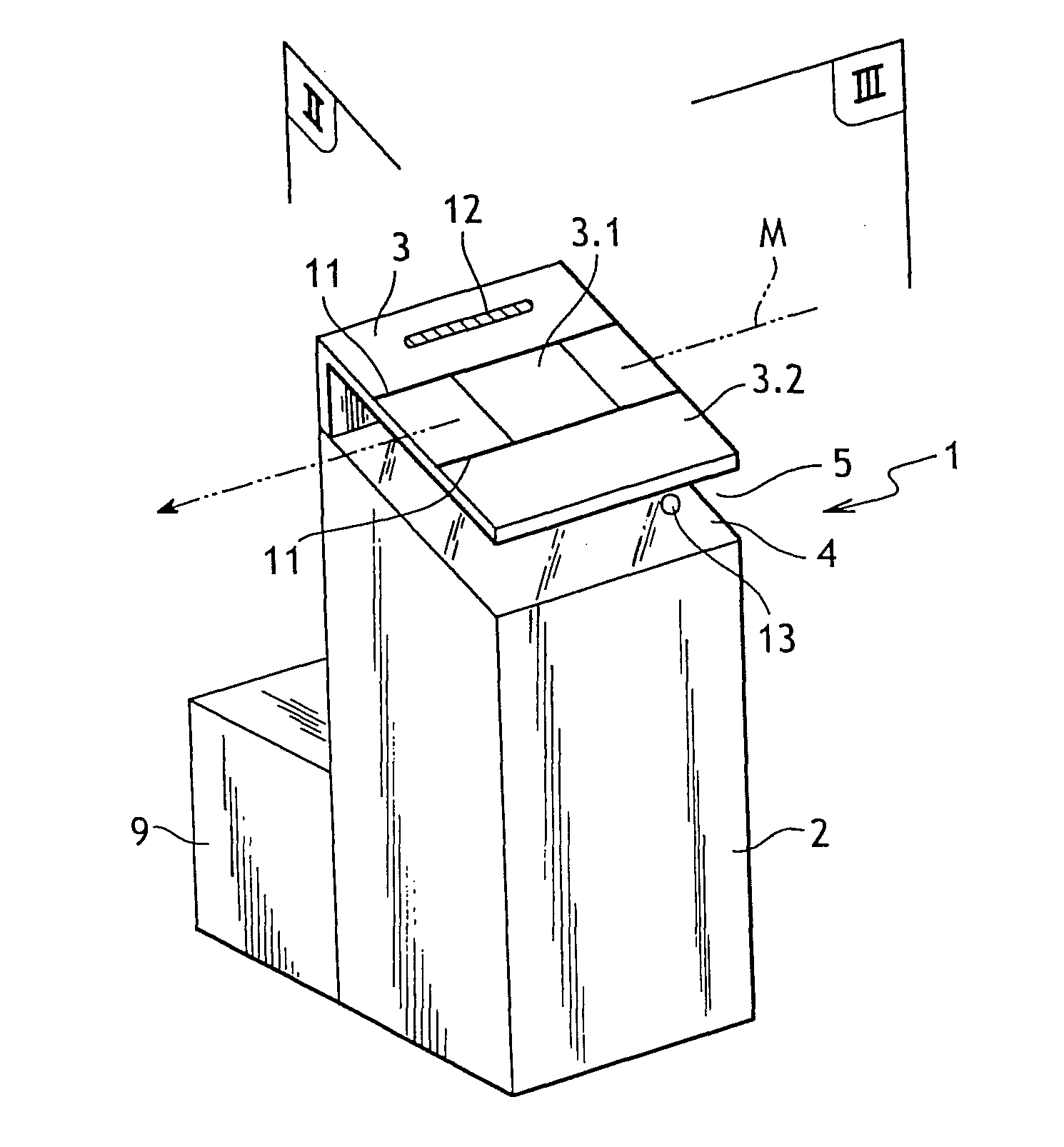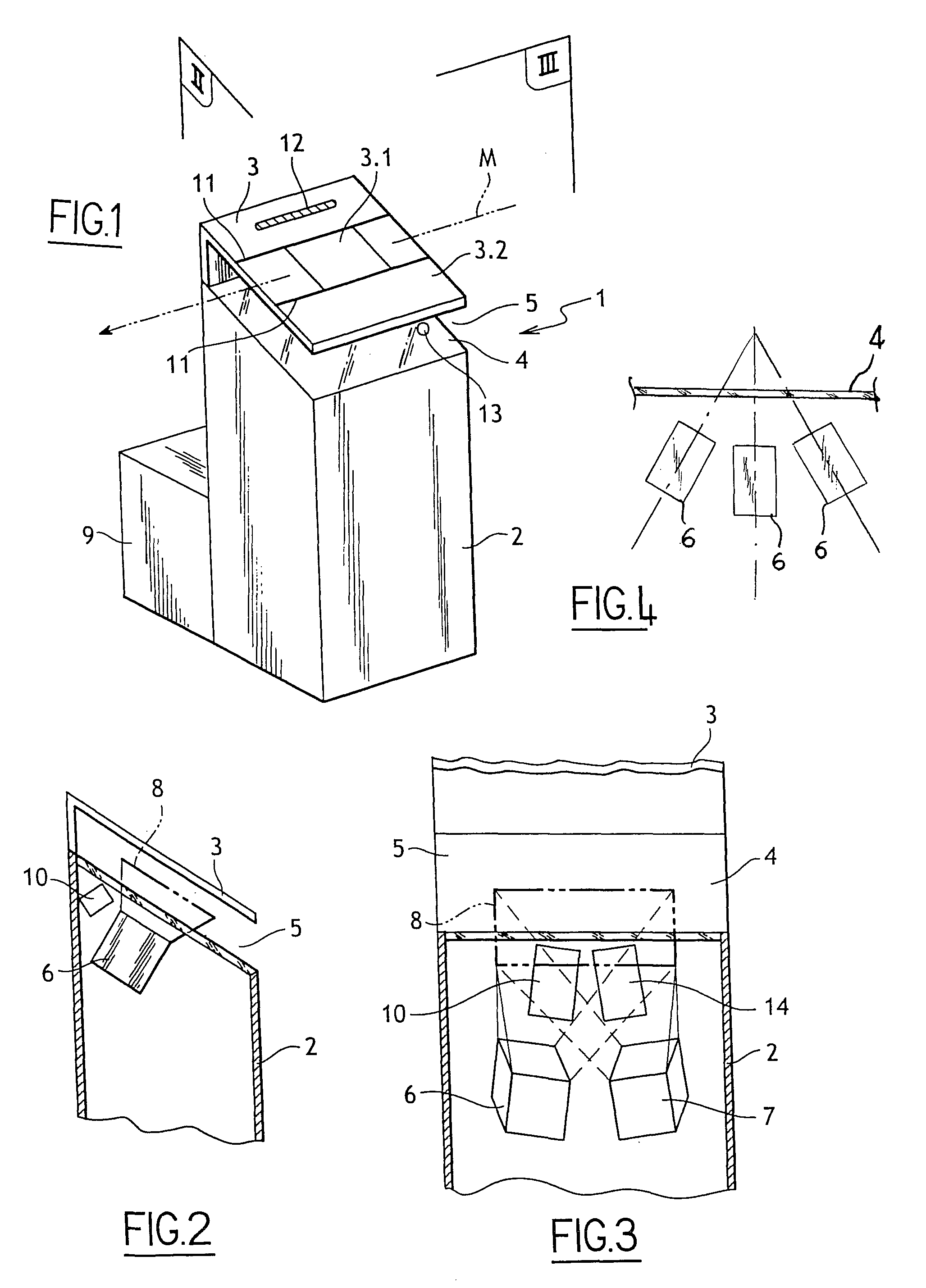Device for acquiring images of patterns formed by furrows in the skin of fingers or the palm of the hand
a technology for acquiring images and patterns, applied in the field of devices for acquiring images of patterns formed by furrows in the skin of fingers or the palm of the hand, can solve the problems of inability to acquire fingerprints, slow mode of operation, and increase the duration of control, so as to maximize the simplicity of use
- Summary
- Abstract
- Description
- Claims
- Application Information
AI Technical Summary
Benefits of technology
Problems solved by technology
Method used
Image
Examples
Embodiment Construction
[0036]With reference to the figures, the image acquisition device in accordance with the invention comprises a stand 1 including a console 2 surmounted by a screen 3 that extends parallel to a transparent top face 4 of the console 2. The top face 4 and the screen 3 are inclined relative to the horizontal at an angle of about 45°, so that the screen 3 is tilted towards a user facing the console 2. The top face 4 and the screen 3 are spaced apart by a distance of a few centimeters (e.g. five centimeters for acquiring fingerprints, and eight centimeters for acquiring palm prints) so as to define between them a zone of empty space 5 that is open, in this example to the front and to both sides, so as to provide a passage for a hand of the user.
[0037]The console 2 contains two optical acquisition members, namely a main optical acquisition member, here a color camera 6, and an additional acquisition member, here an infrared camera 7, both of which are mounted in the console 2 so as to have...
PUM
 Login to View More
Login to View More Abstract
Description
Claims
Application Information
 Login to View More
Login to View More - R&D
- Intellectual Property
- Life Sciences
- Materials
- Tech Scout
- Unparalleled Data Quality
- Higher Quality Content
- 60% Fewer Hallucinations
Browse by: Latest US Patents, China's latest patents, Technical Efficacy Thesaurus, Application Domain, Technology Topic, Popular Technical Reports.
© 2025 PatSnap. All rights reserved.Legal|Privacy policy|Modern Slavery Act Transparency Statement|Sitemap|About US| Contact US: help@patsnap.com


